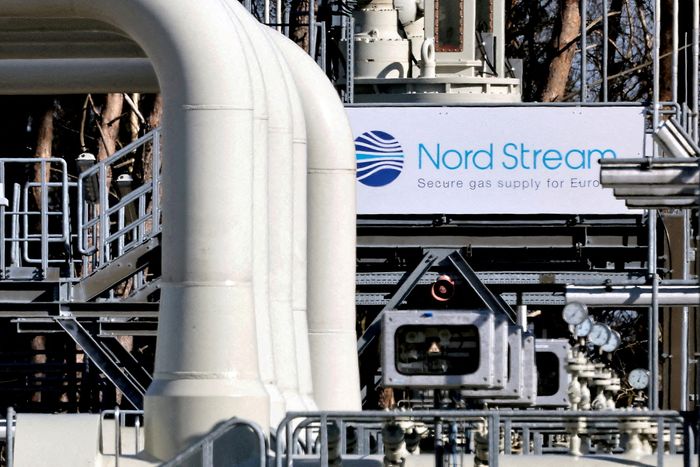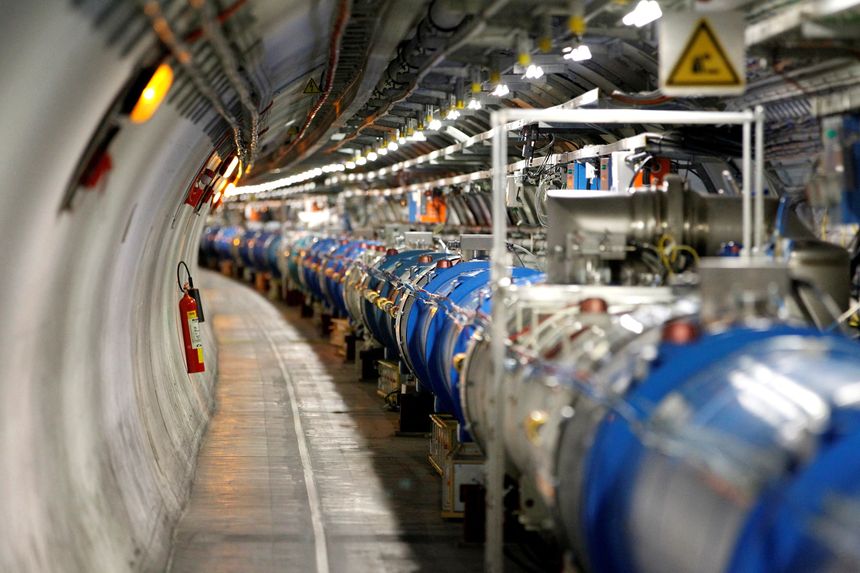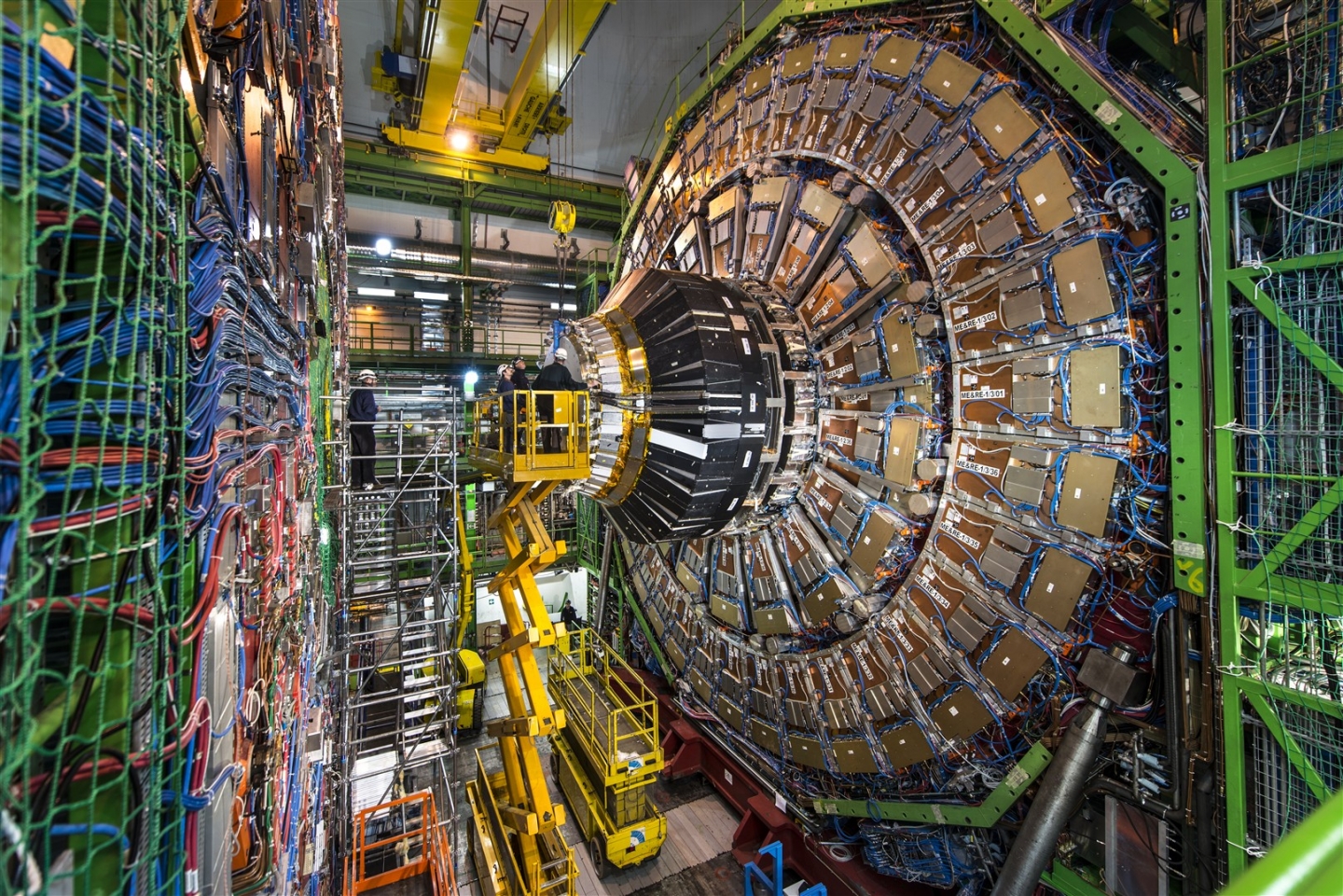The world’s largest particle accelerator may stop working because of a lack of electricity
- Tram Ho
Serge Claudet, chair of the energy management board of the European Organization for Nuclear Research (CERN), said it was working on a plan to shut down some of the organization’s particle accelerators at times of the most urgent environmental emergencies. energy. And CERN is also considering decommissioning the Large Hadron Collider (LHC), the world’s largest particle accelerator, if necessary.
“Our real concern is grid stability, because we do all we can to prevent blackouts in our area,” Claudet said.
These preparatory activities continue to demonstrate the far-reaching impact of Europe’s dependence on Russia for energy supplies. The emergency measures are now being introduced after Russian energy giant Gazprom PJSC said last Friday that it would indefinitely stop the supply of natural gas through the Nord gas pipeline. The Stream, the main lifeline for fueling Europe, pushes the continent closer to self-distributing gas as winter approaches.
Russia indefinitely suspended natural gas flows to Europe via the Nord Stream pipeline on Friday, pushing the bloc closer to gas allocation as winter approaches.

The Nord Stream pipeline is the gas lifeline of the whole of Europe.
Major energy consumers across the continent are planning to cut consumption during the winter, when gas and electricity demand peaks for heating. Several plants in Europe, from steel mills to fertilizer plants, are closing as soaring electricity and gas prices make them uncompetitive in the global market.
Meanwhile, CERN is located on a large complex straddling the Franco-Swiss border and is one of France’s largest electricity consumers. At peak operation, it consumes nearly 200 megawatts of power, a third more than the nearby city of Geneva.
As for the Large Hadron Collider, its greatest scientific achievement was in 2012 the confirmation of the existence of the Higgs particle, a particle with the same mass as all other particles. Currently, the LHC is probing the properties of the Higgs particle and looking for particles that could make up dark matter, which scientists theoretically think pervades the universe but has so far not been discovered. presently. The LHC works by accelerating protons and other particles in opposite directions around a 27-kilometer loop, then slamming them together at close to the speed of light to test the particles for existence. shortly after the collision.

The Large Hadron Collider is the world’s largest particle accelerator, consuming one-third as much energy as the French city of Geneva when it’s operating at its peak.
The LHC is one of eight accelerators in the complex. And CERN’s purpose is to keep the LHC running and avoid a sudden shutdown that could disrupt this $4.4 billion machine, according to Claudet.
He also said CERN was in discussions with its electricity supplier, French utility EDF SA, and received a warning that the center would need to consume less electricity. CERN will prioritize shutting down accelerators other than the LHC, reducing the hub’s power consumption by up to 25%.
This past July, the center boosted the LHC to smash particles together at the highest energies ever achieved in a particle accelerator. That step comes shortly after Moscow began reducing gas flows through the Nord Stream pipeline following its invasion of Ukraine and the West’s decision to impose sanctions on Moscow. The energy crisis was compounded by a power outage at France’s fleet of nuclear reactors, a major source of electricity for the continent.
In fact, if the LHC is turned off, the hub will save another 25% of electricity. Because in operation, a superconducting magnet would be cooled to -456 degrees Fahrenheit to bend the beam of particles, and this requires a significant amount of electricity even when the beam is turned off. Because allowing the magnets to heat up could delay experiments at the LHC for weeks. Therefore, the power consumed by the LHC is always very large.
“It was a voluntary act,” Claudet said. “You wouldn’t want to break your toys.”

The central core of the particle accelerator.
CERN officials are working on a plan to halt the experiments and they will present the matter to representatives of the donor governments at the end of the month. As a transnational organization, CERN’s territory does not officially belong to Switzerland or France legally. And member countries will contribute to CERN’s operating budget, for example, in 2008 it was about 664 million Euro.
“If we are given funding to do science and voluntarily stop science programs to save energy, we have to make sure that we have the support of the respective countries,” Mr. Claudet said. “
Power supplies are particularly tight in France because power company EDF discovered pipeline corrosion on one of their most popular reactor designs, prompting the company to order 12 of them. go repair. Officials said they aim to restart the reactors before the end of winter.
RTE, the company that operates France’s electricity grid, said the country needed to cut its electricity consumption by 15% this winter during peak hours to avoid blackouts. The gas shortage leaves less fuel for gas-fired power plants, which are often used to quickly ramp up supply when the grid is strained.
Companies in Europe often have provisions in their contracts with electricity suppliers that require them to reduce consumption during peak times. For a factory, that means temporarily shutting down the production line and relying on inventory to supply customers.
However, CERN’s contract with EDF does not contain such a clause, according to Mr. Claudet. The center has a tight schedule to conduct experiments, especially when the LHC runs from May to December. Particle accelerators usually operate 24 hours a day, because they need time. long time required to generate enough collisions and confirm a test result.
“A storehouse of high-energy particles?” , said Mr. Claudet. “No, we’re sorry there’s no such thing.”
Refer to WSJ, CERN
Source : Genk
